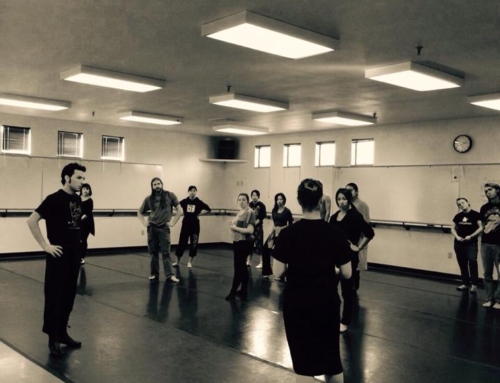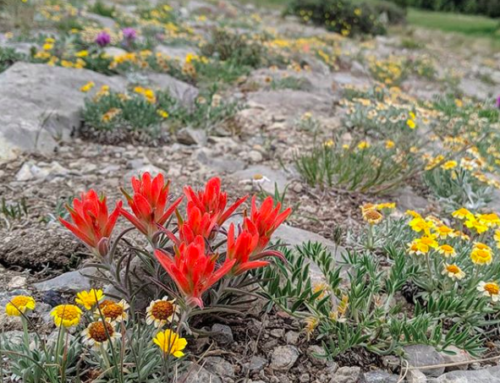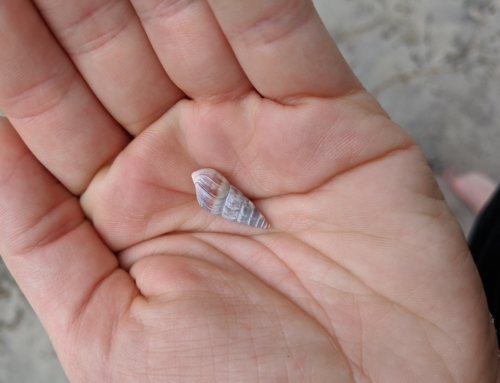Flamenco has community & dialogue built into its core. It’s always interesting to me to see the ways that modern dance contrives programs so that it builds community and dialogue. I deeply admire much of this type of work (think Bill T. Jones’ Still/Here). But at the same time, how can we equally value dance forms that have community and dialogue built-in, dance forms in which that is inherent and implicit? (Many of these forms are folk arts that have been marginalized in the world of “high art” or academia.)
I’ve taught workshops where I combined creative movement models and community building with flamenco, and yet, I always go back to “just” flamenco. Why?
- Flamenco requires dialogue, it requires listening:
Have you ever done a listening exercise where one person talks for a set amount of time, then the listener repeats back to the speaker what they think the speaker has communicated. It helps the speaker clarify their expression, and requires active listening from the listener, rather than passive listening or interjecting—the listener simply waiting to make a point they had already crafted.
Flamenco, in its improvised form, in many ways, is that exercise, embodied. As dancer, there are moments where you get to say what you want to say (in a footwork section, or a desplante – a call for a new section of the dance). The musicians match your phrasing, your intention, your energy—they support you (hopefully), rather than talking over you. Most dancers can tell you they’ve been in situations or worked with musicians where there was no connection, the musician played whatever he or she felt like, no acknowledgement of what the dancer was doing. It’s incredibly frustrating, and feels like a battle or argument on stage—one person constantly trying to drag along the other person, and when the dance is over, it feels incredibly unsatisfying.
It’s not always musicians supporting the dancers; dancers have to listen to the music and not just dance whatever they want. When a musician sings or plays a verse or melody, the dancer’s task is to follow and connect with the music—they must listen. It’s not just “Okay, I’m not gonna do footwork because they’re playing” but instead, “How can I support, listen, and be with what they are ‘saying’? Meet them where they are and find a way to support or weave in and out of what they’re playing.
I will be the first to admit I’m not always good at that. I am good at matching the energy, the intention, but sometimes my preconceived ideas of how I want to move, or the pre-decided improvisatory scores don’t really match the player – sometimes I’m lost in my world and not with the musicians creating a new world. I do usually decide my improvised scores as I go along (which does help match the musicians), but sometimes I have been more involved in what I want to express than what the music is expressing, because I haven’t been fully listening, fully present to what the musicians are saying.
As dancers, we typically have a vast collection of steps we can use, but sometimes, we choose those entirely ahead of time, which thwarts our ability to fully listen and react – that’s the equivalent of having a pre-conceived statement rather than actually answering and reacting to the person you’re in dialogue with. And what’s the fun in that?
There are opportunities scattered throughout any dance to react, to respond, and to riff off one another. That is collaboration—to build something bigger with another person. Something either voice alone could not have arrived at on their own. Pushing each other, challenging each other – playful creation. Flamenco does that live (as do many other live, improvised performing arts). And that’s what makes it frickin’ fun!
I never cease to be amazed at how my growth in flamenco parallels or illuminates my personal growth. Learning the same lesson in my relationships—how to listen and not interrupt. Listening to understand, not to fire back. Conversations that take you somewhere new, rather than just repeating old ideas – that’s what I’m after in my relationships with others and in dance. And dance, like life, is a journey.
Thanks to a lot of help from the one and only Marija Temo, and having time to do some deep-listening, a new world of listening has been opened up to me, and I’m realizing just how much I didn’t used to fully listen.
And this listening, building together, seems to be needed outside of flamenco as much as within the art.
2. Flamenco requires community, inherently building support:
Flamenco without the jaleo (shouts of encouragement) always sounds like it’s missing something. The people clapping in rhythm can freely express a shout of olé when: they feel that connection between dancer and musicians; when the dancer does a difficult step; when the performers execute a phrase with immense feelings, transmitting that to the audience; or when the dancer and musicians are in complete synergy. The “audience” is not passive, but actively engaged—also listening, following, and adding their appreciation for the dialogue unfolding before their eyes. And as they keep the soniquete (swing) they create the foundation for the art in front of their eyes.
Physically in space, to be in a circle, you are supported, cradled. Sonically, with the chorus of palmas (hand-claps) you are held up – like a trampoline from which you can bounce and land, and with the shouting when something clicks, you are anything but alone. It’s not a competition or a battle, but a coming together in the moment, appreciating what we each have to offer and seeing where it goes. There’s an energy to the improvised flamenco setting that offers community.
And in that participation, reflection takes place – when do I say olé and why? What touches me, what is effective, and why? Flamenco also demands analysis, even from onlookers. Perhaps best saved for another blog, flamenco requires one to know oneself, to dig deep in oneself and allow our inner-selves to be expressed. Again, this is something dance/movement therapy achieves as well.
All in all, flamenco has so much it can offer in community settings. Creative movement, self- & group-reflection, and community have to be present for flamenco to even be. Flamenco is “enough” even in the current trends of the dance field.








Leave A Comment